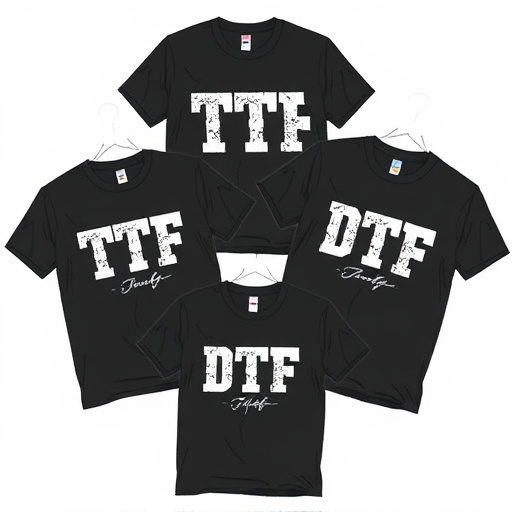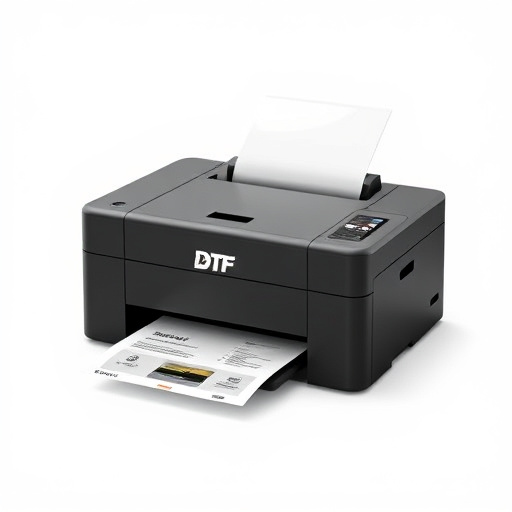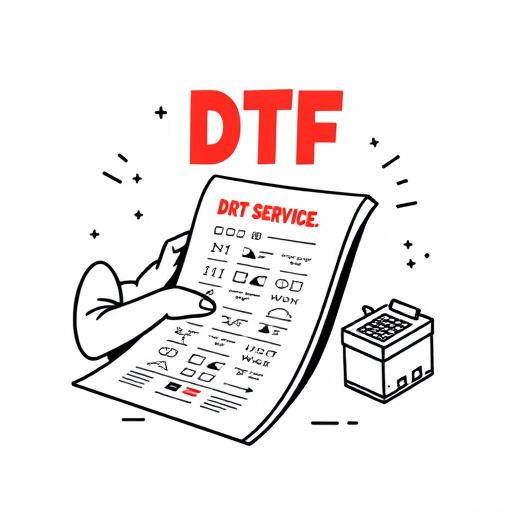Master DTF Shaker: Crack-Free Prints, Consistent Results

The DTF Shaker revolutionizes custom textiles with direct ink application, eliminating transfer pape…….
Welcome to an in-depth exploration of the dynamic phenomenon known as the DTF (Dynamic Transition Function) Shaker, a technological marvel that has been shaking up industries worldwide. This article aims to guide you through the intricate world of this innovative concept, revealing its impact, intricacies, and potential. By the end, readers will grasp the significance of DTF Shakers in today’s fast-paced business landscape and their role in shaping the future of numerous sectors.
Definition: A DTF Shaker, short for Dynamic Transition Function Shaker, is an advanced technological device designed to facilitate seamless transitions between various states or stages within a system. It employs sophisticated algorithms and adaptive mechanisms to optimize processes, enhance efficiency, and improve overall performance.
Core Components:
Dynamic Transition Algorithm (DTA): The brain of the DTF Shaker, this algorithm is responsible for monitoring and controlling state transitions. It analyzes input data, predicts outcomes, and adjusts parameters in real-time.
Adaptive Mechanism: This component enables the shaker to learn from feedback loops, adapt to changing conditions, and improve its performance over time. It ensures that the transition functions remain optimal as external factors evolve.
User Interface: A user-friendly interface allows operators to interact with the system, set parameters, monitor progress, and receive tailored recommendations for smoother transitions.
Historical Context: The concept of DTF Shakers emerged from the need to address complex challenges in systems where traditional methods struggled. Over time, researchers and engineers developed sophisticated algorithms inspired by natural phenomena, such as biological adaptations and cognitive learning. This evolution led to the creation of adaptive systems capable of self-optimization, marking a significant shift in industrial practices.
Significance: DTF Shakers are transformative tools with wide-ranging applications. They enable businesses and organizations to:
The influence of DTF Shakers extends far beyond borders, leaving a significant mark on various industries globally. Here’s an overview:
| Region | Impact Areas | Key Trends |
|---|---|---|
| North America | Manufacturing, Supply Chain Management | Early adoption, focus on AI integration |
| Europe | Energy Sector, Healthcare | Emphasis on data privacy and regulatory compliance |
| Asia Pacific | E-commerce, Logistics | Rapid deployment, cost-effectiveness |
| Middle East & Africa | Oil & Gas, Construction | Scalability, resilience against harsh environments |
| Latin America | Agriculture, Water Management | Sustainable solutions, local customization |
Trends Shaping the DTF Shaker Landscape:
Industrial Internet of Things (IIoT) Integration: The fusion of DTF Shakers with IIoT enables real-time data exchange and enhanced process automation.
Artificial Intelligence (AI) Advancements: AI-powered DTF systems can predict failures, optimize maintenance schedules, and make data-driven decisions.
Remote Monitoring and Control: Cloud-based solutions allow experts to manage DTF Shakers from anywhere, ensuring efficient remote support.
Sustainable Focus: There is a growing trend towards eco-friendly DTF technologies for industries aiming to reduce their environmental impact.
The global market for DTF Shakers is experiencing rapid growth, driven by increasing industry digital transformation and the demand for adaptive solutions. According to a recent report by [Research Firm X], the market value is projected to surpass $[X billion] by 2025, with an annual growth rate of Y%.
Venture Capital: Startups offering innovative DTF solutions attract significant VC funding, fueling rapid product development.
Corporate Investments: Established companies invest in DTF technologies to enhance their competitive edge and optimize existing infrastructure.
Government Grants: Many governments support R&D in DTF systems, driving innovation and fostering local industries.
DTF Shakers contribute to economic growth by:
Increasing Productivity: Industries adopting DTF technology report higher output per hour worked.
Reducing Costs: Efficient resource utilization and minimized errors lead to substantial cost savings for businesses.
Attracting Investments: Cities and regions with advanced DTF infrastructure become attractive destinations for industries seeking competitive advantages.
The fusion of Artificial Intelligence with DTF Shakers has led to remarkable achievements:
Predictive Maintenance: AI algorithms analyze sensor data to predict equipment failures, enabling proactive maintenance and reducing downtime.
Smart Optimization: Systems can learn from historical data, adjust transition parameters, and optimize processes for maximum efficiency.
Natural Language Processing (NLP): NLP enables voice control and natural language interactions with DTF systems, enhancing user experience.
Real-time Monitoring: IoT sensors provide live data feeds, allowing remote monitoring and control of DTF Shakers.
Data Analytics: Integrated analytics platforms process vast amounts of data, identifying trends, anomalies, and areas for improvement.
Automated Decision Making: Advanced algorithms make data-driven decisions, optimizing processes without human intervention.
Quantum Computing: The integration of quantum computing could revolutionize DTF technology, enabling unprecedented computational power for complex optimization problems.
Biomimicry: Drawing inspiration from biological systems, future DTF Shakers might mimic natural adaptations for self-healing and adaptive mechanisms.
Decentralized Networks: Blockchain technology can enhance security and transparency in DTF system operations, ensuring data integrity.
The rapid adoption of DTF Shakers has prompted regulatory bodies worldwide to address associated challenges:
Data Privacy: With vast data collection, regulations like GDPR (General Data Protection Regulation) ensure user privacy and protect sensitive information.
Product Safety: Standard organizations set guidelines for DTF Shaker manufacturing, ensuring product safety and reliability.
Intellectual Property: Patents and copyright laws safeguard innovative DTF technologies, fostering fair competition.
Industry-Specific Regulations: Certain sectors, such as healthcare and finance, have additional regulations governing the use of adaptive technology.
Despite its immense potential, DTF Shaker technology faces several challenges:
Initial Implementation Costs: High initial investment can deter smaller businesses from adopting this technology.
Data Security Concerns: As systems collect vast data, ensuring cybersecurity becomes critical to prevent unauthorized access and data breaches.
Technological Complexity: Understanding and implementing DTF algorithms require specialized skills, creating a skills gap in the workforce.
Ethical Considerations: AI-driven decision-making raises ethical questions, especially regarding accountability and potential bias in automated systems.
Proposed Solutions:
Government Incentives: Subsidies and tax benefits can offset initial costs, encouraging businesses to embrace DTF technology.
Cybersecurity Standards: Developing robust cybersecurity protocols and standards will enhance data protection and build trust.
Training Programs: Governments and educational institutions should collaborate on training initiatives to bridge the skills gap.
Ethical Guidelines: Establishing ethical frameworks for AI development ensures responsible innovation and accountability.
A leading automotive manufacturer adopted DTF Shakers in their assembly lines, aiming to streamline production. The system optimized the flow of vehicles through the factory floor, reducing production time by 20%. AI-driven predictive maintenance minimized equipment downtime, resulting in increased overall equipment effectiveness (OEE). This case highlights the impact of DTF technology on manufacturing efficiency and productivity.
A renewable energy company utilized DTF Shakers to manage fluctuations in solar power generation. The system adjusted energy storage and distribution in real-time, ensuring a stable power supply. This application demonstrates the role of DTF technology in integrating sustainable energy sources into the grid.
A major healthcare provider implemented DTF Shakers in their logistics network to manage drug distribution. The system optimized delivery routes and inventory levels, reducing costs and ensuring timely patient access to medications. This case study illustrates the potential of DTF technology in improving critical supply chain operations.
The future of DTF Shakers is filled with exciting possibilities as technology continues to evolve:
Hyper-Personalized Experiences: Advanced algorithms can tailor DTF Shaker settings to individual user preferences, creating customized experiences.
Autonomous Systems Integration: DTF technology can play a pivotal role in developing fully autonomous systems, enabling robots and vehicles to navigate complex environments.
Sustainable Innovations: With growing environmental concerns, DTF Shakers will be at the forefront of sustainable solutions, optimizing energy use and resource allocation.
Collaborative Research: Open-source platforms and collaborative research initiatives will foster innovation, accelerating the development of cutting-edge DTF applications.
The DTF Shaker stands as a testament to human ingenuity, bridging the gap between complex systems and streamlined operations. Its global impact is undeniable, with industries across sectors reaping the benefits of increased efficiency, productivity, and adaptability. As technology continues to advance, DTF Shakers will remain indispensable tools in shaping tomorrow’s industries, driving innovation, and empowering businesses to thrive in an ever-changing world.
Q: How do DTF Shakers differ from traditional control systems?
A: Traditional systems often rely on fixed rules and static parameters, while DTF Shakers employ adaptive algorithms that learn from feedback loops, enabling dynamic adjustments to changing conditions.
Q: Can DTF Technology be applied to small businesses?
A: Absolutely! While initial implementation costs might be higher for smaller operations, government incentives and scalable solutions are making DTF technology more accessible. Benefits include improved efficiency, reduced operational costs, and enhanced competitiveness.
Q: What role does data security play in DTF Shaker deployments?
A: Data security is paramount due to the vast amount of sensitive information collected. Implementing robust cybersecurity measures, encryption, and access controls ensures data integrity and protects against cyber threats.
Q: How can businesses ensure they are using DTF technology ethically?
A: Businesses should develop ethical guidelines for AI development, ensuring transparency, fairness, and accountability in decision-making processes. Regular audits and feedback from stakeholders can help maintain ethical standards.

The DTF Shaker revolutionizes custom textiles with direct ink application, eliminating transfer pape…….

The DTF Shaker is a cutting-edge printing tool that revolutionizes T-shirt customization by using di…….

The DTF Shaker is a revolutionary printing technology for clothing brands and textile businesses, of…….

The DTF Shaker is a tool for direct printing designs onto light fabrics using water-based transfer f…….

The DTF Shaker is a revolutionary direct-to-film printer for textile printing, offering fast and eff…….

The DTF Shaker automates DTG (Direct to Garment) printing, drastically reducing manual labor and pro…….

The DTF Shaker technology revolutionizes custom print production for clothing, enabling small busine…….

The DTF Shaker is a vital tool for professional powder application in DTF printing, preventing clump…….

The DTF Shaker is a revolutionary tool for custom print shops, offering streamlined production with…….

The DTF Shaker is a multi-purpose tool offering various size and capacity options for diverse indust…….